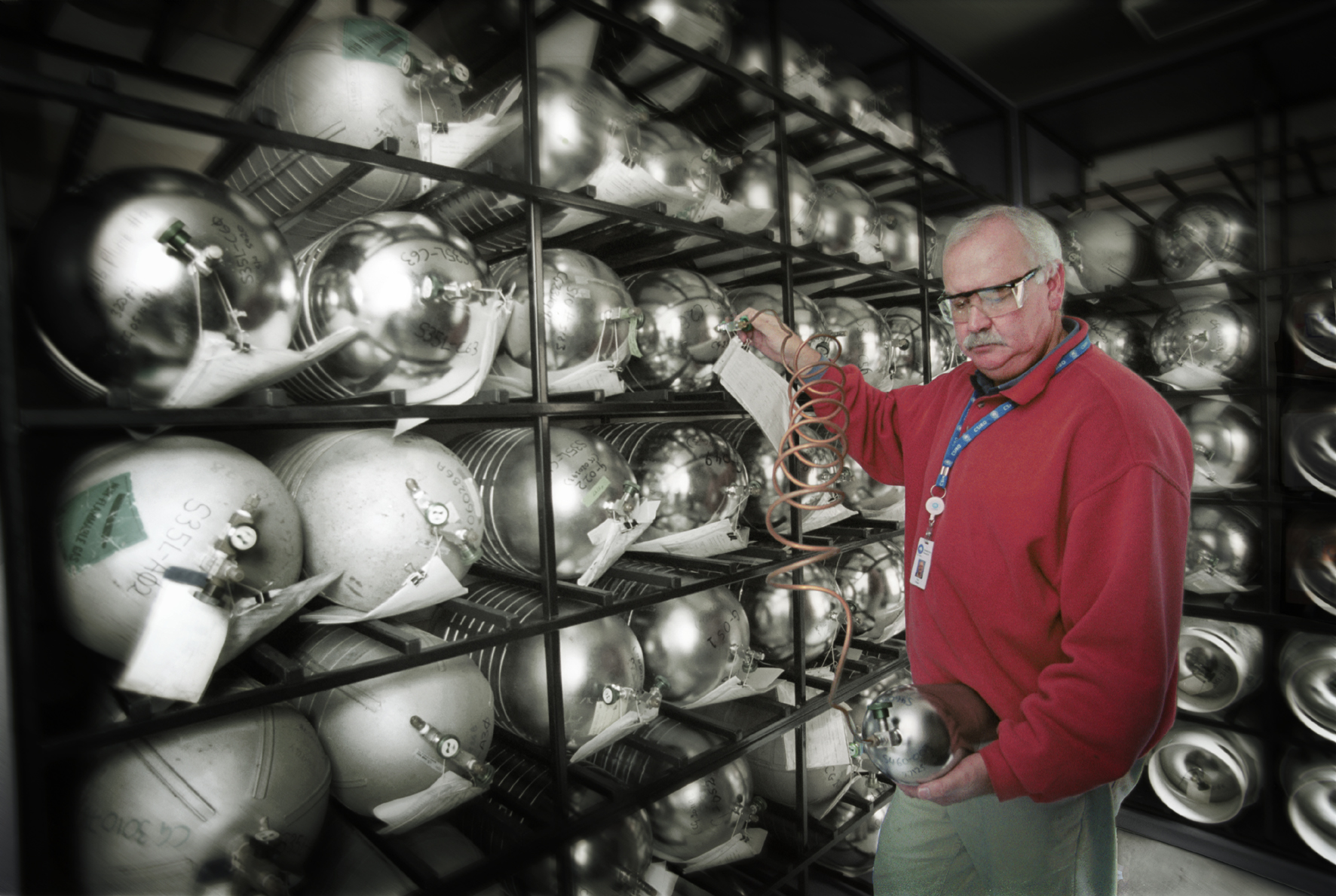The ’70s were all about disco, big hair, gold chains and flares… you can smell the hairspray just thinking about it.
You can’t sport a hairstyle like this without hairspray. Image: Indiewire
But while the hairstyles were getting bigger and badder, scientists were busy making a discovery that would put them on a collision course with this emerging fashion.
The atmosphere’s ozone layer was being depleted – and CFCs (chlorofluorocarbons) were responsible. CFCs were one of the main chemicals in hairspray (as well as every other aerosol product) and were used in refrigerators and air conditioners.
When sunlight hits CFC molecules in the upper atmosphere, they break apart, producing a chlorine atom that in turn reacts with ozone molecules and breaks them apart – see this explanation from the Bureau of Meteorology. The ozone layer provides us Earthlings protection from the Sun’s harmful UV rays.
This discovery led to a landmark international agreement known as the Montreal Protocol of 1987, which saw most of the world’s countries sign on to phase out the use of CFCs. This has largely succeeded to date, with CFCs having been almost completely replaced by a related group of chemicals, hydrofluorocarbons (HFCs), which don’t deplete ozone (although they do have their own set of problems).
Or so we thought.
In research published in the journal Nature Geoscience this week, scientists revealed that they have detected four new ozone-depleting gases in our atmosphere. More than 74,000 tonnes of three new CFCs and one new hydrochlorofluorocarbon (HCFC) – an intermediate form of CFC – have been released into the atmosphere.
While this is a small amount when compared to the peak emissions of other CFCs in the ’80s, these emissions are contrary to what the Montreal Protocol set out to achieve – and so raise questions about where they are coming from.
The team, including our own Dr Paul Fraser, made the discovery by comparing today’s air samples with air trapped in polar firn (compacted snow), providing a natural archive of the atmosphere. They also looked at air samples collected between 1978 and 2012 at our Cape Grim air pollution station in northwest Tasmania.
The source of these new gases remains a mystery.
“We know they are coming from the northern hemisphere, but that is as good as we know at this stage,” Dr Fraser told ABC Science.
“It is good that we have found them quite early and that they haven’t accumulated to a significant degree in terms of ozone-depletion. Now we are hoping to find out where they are coming from so their sources can be switched off.”
Dr Paul Fraser with air samples collected at Cape Grim, Tasmania.




12th March 2014 at 10:34 pm
Surely, its China??
13th March 2014 at 9:47 am
Why not developing regions in Eastern Europe or cash strapped firms in the developed west? I’d be surprised if there wasn’t a black market for these compounds driven by a desire to avoid upgrading old refrigeration systems.
12th March 2014 at 1:34 pm
Thank you for replies. It was just a thought on a practical solution to the problem. I wouldn’t think that a special plane would be needed though, just the normal airlines that transit over or near the Poles. I have noted the above Website & accept their explanation.
12th March 2014 at 12:20 pm
Once the source has been identified you would just need to deal with the source. I’d suspect that flying a plane to release ozone would be expensive and you couldn’t be sure if this would be effective.
11th March 2014 at 5:08 pm
Ozone can be manufactured as seen in old video of running TV’s in a tank of Ozone. Aircraft fly high over the poles all the time. What’s the matter with dispersing Ozone to replenish the lost Ozone, as well as cleaning up the bad chemicals. Oh, I know. If we did that then no-one would want to clean up the bad chemicals. Is that right?
12th March 2014 at 11:41 am
In response to John Barr, according to the US EPA, it would take twice the current US electricity supply to manufacture enough ozone. That and a bunch of equilibrium arguments means that replenishing the ozone layer by adding more ozone is simply not a practical solution. See http://www.epa.gov/ozone/science/makemore.html